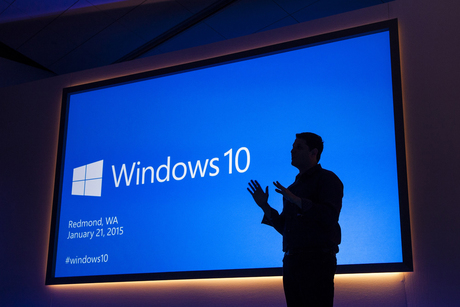Will Windows 10 be the straw that breaks IT's back?

Windows 10 and its as-a-service approach signal a challenging new paradigm for IT departments.
The release of the Windows 10 operating system later this year will spell havoc for enterprise IT. It’s likely that already overstretched IT departments will reach breaking point as Windows 10 introduces the idea of Windows as a service - marking a shift away from three- to four-year operating systems updates to continuous, incremental delivery of new functionality.
Given that software drives business today, typically about 30% of an organisation’s applications require upgrades and migrations every year - even without the Windows as a service-style approach to software upgrades.
This means that enterprise IT departments are already stretched as they try to cope with ever-shortening operating system (OS) lifecycle migrations (considered among the most time-intensive, costly and manpower heavy projects).
Continuous OS-related upgrades as proposed in Windows 10 therefore have the potential to truly break the backs of IT departments. Each time a new upgrade/patch/functionality is introduced, IT will need to test for compatibility with the environment (hardware, software on premise, cloud and in virtualised settings), fix and package and then deliver to end users.
As more and more software vendors adopt an agile and continuous software development mentality, IT departments need the bandwidth to manage multiple, simultaneous upgrades across the range of business-critical software and other applications deployed by their organisations.
But the reality is that due to tight budgets and shrinking teams, the challenge and complexity of keeping an organisation’s IT environment up to date is growing exponentially, making the job of IT professionals almost impossible.
On top of this, the old patchwork of tactical tools and processes that used to suffice to prepare applications for deployment no longer works so well, and the entire organisation suffers because the IT backlog dictates when strategic apps make it to the end users - rather than when the business actually needs it.
In addition, manual processes for software asset management can be highly error prone, resulting in application misuse, over- or under-procurement and failure to comply with auditory requirements. These oversights can have significant impacts on user productivity as well as an organisation’s bottom line.
To deliver software to users in a timely manner - akin to the concept of continuous upgrades being adopted by software vendors - it is imperative that IT departments keep pace and embrace the idea of ‘Application Readiness’ to ensure compatibility and service quality.
Adopting Application Readiness best practices and technology that automates application deployment processes for fast, efficient and effective migration planning, testing, remediation and repackaging is the only way for IT to ensure that the application estate is futureproof and that the risks and costs associated with ineffective software asset management are minimised.
For those wanting to streamline processes further, an enterprise app store can also take some of the headache away from IT as employees upgrade their devices to Windows 10 on their own, when they’re ready.
As Windows 10 approaches, organisations should equip themselves to manage this new approach to upgrades by vendors, or pay the price of inefficiency and unavailability of critical business tools.
Making sure your conversational AI measures up
Measuring the quality of an AI bot and improving on it incrementally is key to helping businesses...
Digital experience is the new boardroom metric
Business leaders are demanding total IT-business alignment as digital experience becomes a key...
Data quality is the key to generative AI success
The success of generative AI projects is strongly dependent on the quality of the data the models...







